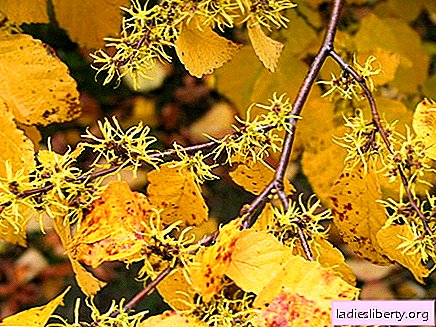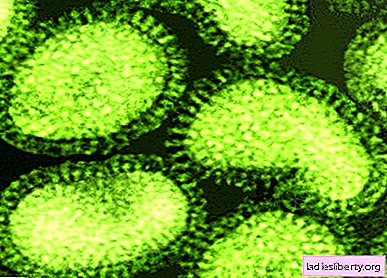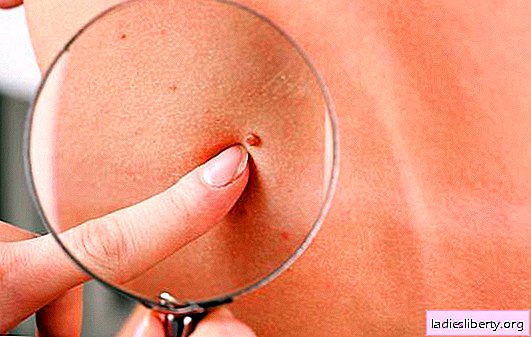
Hamamelis - general description
Witch hazel is nothing but a perennial shrub that can reach a height of several meters. In addition to its Latin name Hamamelis, it is also known as "Witch Hazel" and "Witch Walnut." So it was called because of the late flowering, because the fruits of the bush ripen only the next year. In appearance, it is very similar to hazel. It has alternate, whole, hard-to-touch leaves and yellow flowers that are placed in groups in the axils of the leaves. The fruit is a small box.
Hamamelis - types and places of growth
Wild witch hazel grows in moist forests in eastern North America, the Caucasus and East Asia. In Europe, it is often grown in "pharmacy gardens".
The most common types are:
- soft witch hazel - has a pleasant aroma and an abundance of bright yellow flowers;
- Japanese witch hazel - begins to bloom much later than the previous one, has not so fragrant and plentiful flowering;
- Witch hazel - sometimes found in gardens, blooms in autumn; its flowers merge with yellow foliage.
Hamamelis - healing properties
It has a bacteriostatic, vasoconstrictive and astringent effect. It is used for hemorrhoids, varicose veins, phlebitis, for the treatment of traumatic skin lesions and all kinds of wounds, for stopping internal and nasal bleeding, emphysema. Widely used in cosmetology.
In many countries, witch hazel is used as a fixative for diarrhea in adults and children over 7 years old; with inflammation of the palate and gums. It is indicated for inflammation of the female genital organs, chronic joint damage, testicular neuralgia, pyelonephritis and cystitis.
Hamamelis - dosage forms
For the manufacture of various dosage forms using bark (Cortex Hamamelidis) and leaves (Folium Na-mamelidis), which are harvested in the fall. The bark is dried in the open air, it can not even be hidden from direct sunlight, and a dryer (up to 50 ° C) is suitable for these purposes. The leaves are dried in ventilated rooms, mixing them well all the time. Some of the raw materials are used fresh, from which homeopathic preparations and extracts are made.
Hamamelis - recipes
Tea from the leaves: a teaspoon with a slide of dry raw materials is poured into a glass of boiling water. Infused for 10 minutes.
Tea and bark: a teaspoon of witch hazel bark is poured into a glass of water. The mixture is boiled for 10-15 minutes, then infused and filtered slightly warm.
Bark and leaf teas are taken orally for diarrhea. If diarrhea after 3-4 days of regular tea consumption does not stop, then you should seek help from a medical institution. Usual dosage: 2-3 cups per day between meals.
The same actions when rinsing the throat and oral cavity. For the same purposes, witch hazel extract or tincture is used.
With venous insufficiency, hemorrhoids:
- gelatin capsules (290 mg.): 2 pieces three times a day;
- liquid extract: dilute 2-6 ml in 250 ml of water, take throughout the day;
- dry extract: dilute one standard package in 250 ml of water and drink throughout the day;
- A tablespoon of dry leaves is poured with a liter of water (100 ° C) and infused for 10 minutes. Drink 1-2 glasses a day.
For topical use (with neurodermatitis, hemorrhoids, varicose veins, poorly healing wounds), ointments based on witch hazel or liquid preparations based on it are used.
Hamamelis bark powder is used instead of powder for babies and from sunburn.
Hamamelis - contraindications
An overdose of witch hazel can cause rapid breathing and urination, lowering blood pressure, bowel obstruction and irritation of the gastric mucosa.
Comments











